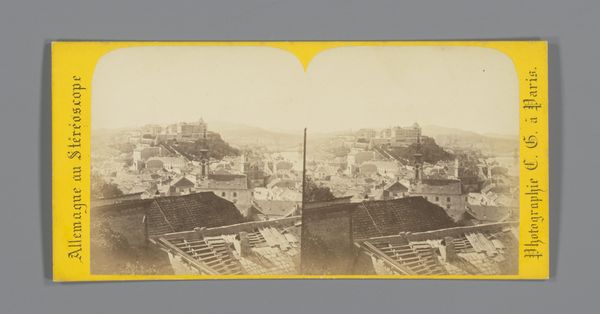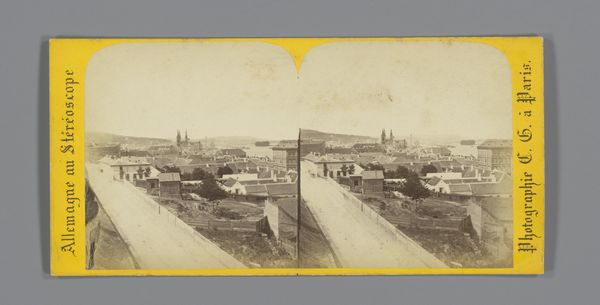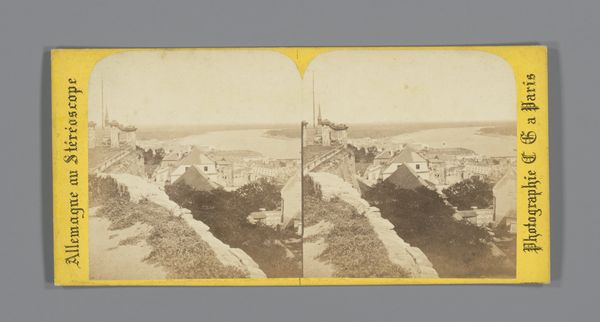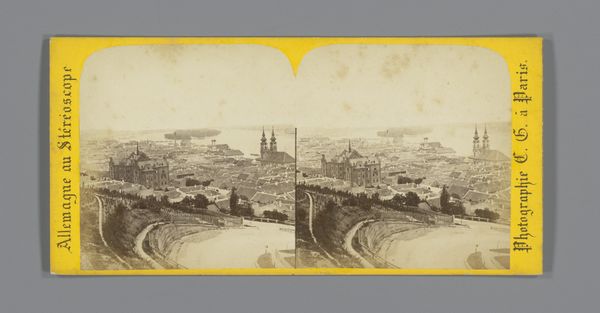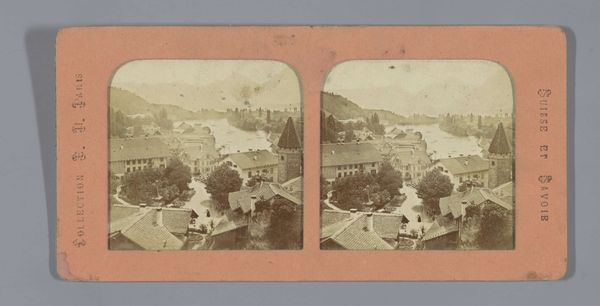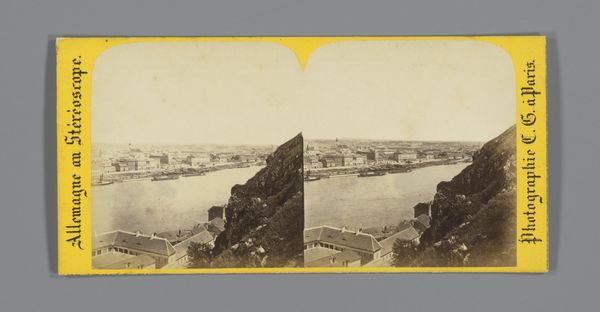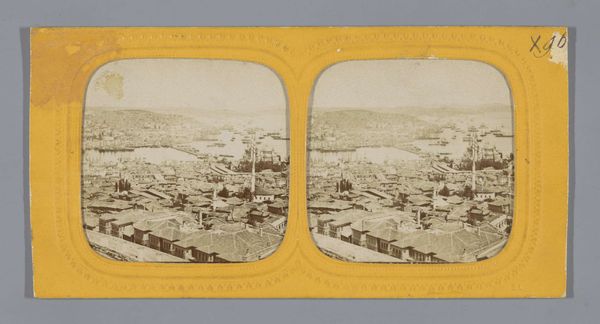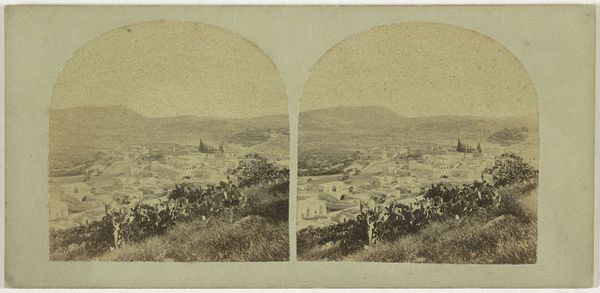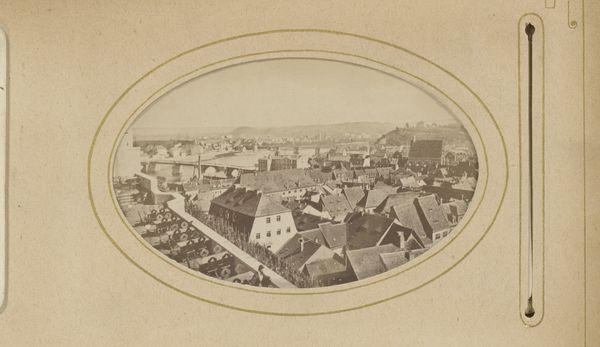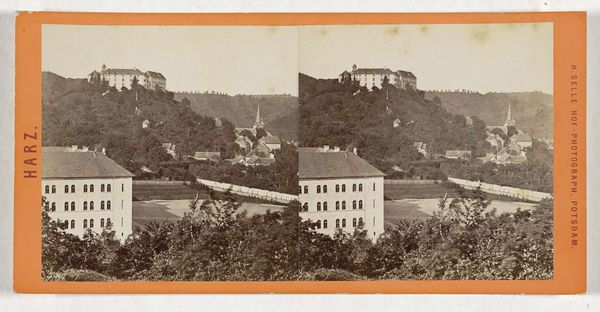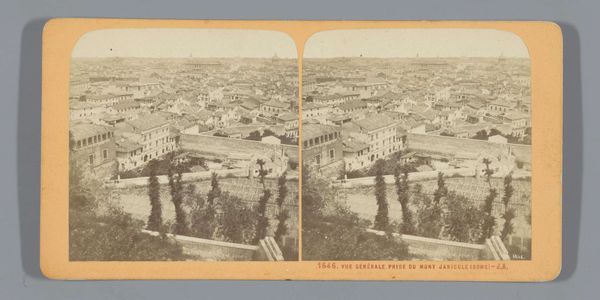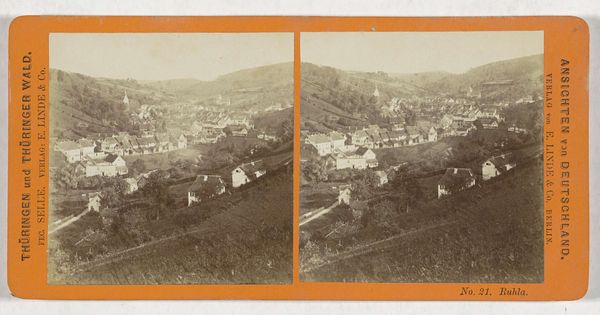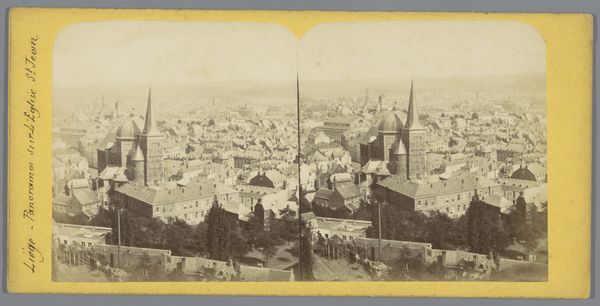
photography
#
landscape
#
photography
#
cityscape
Dimensions: height 84 mm, width 175 mm
Copyright: Rijks Museum: Open Domain
Editor: Here we have "Gezicht op Boedapest," or "View of Budapest," a photograph dating to 1868 by Charles Gaudin. It feels very… structured, almost staged. What do you see in this piece? Curator: This image, especially as a stereoscopic view, offers a glimpse into the rapidly changing urban landscape and the developing tourist industry of the 19th century. Notice how the photographer chose this viewpoint? He likely wanted to show Budapest as a unified, modern capital, legitimizing the Austro-Hungarian Empire's control after the Compromise of 1867. The medium itself, photography, played a crucial role in shaping perceptions of cities. Editor: So the picture isn't just about showing what Budapest looked like, but about showing it in a certain way, for a specific purpose? Curator: Precisely. These images circulated widely, influencing public opinion and solidifying a particular narrative about progress and imperial power. Consider who the intended audience might be. What kind of story are they likely meant to receive? Editor: Probably wealthy tourists or officials who want to see Budapest as this impressive, unified city. It definitely makes you wonder what’s left out of the picture. Curator: Exactly. Understanding the historical context reveals the power dynamics at play, highlighting how photography was used as a tool for shaping perceptions of a city and promoting a particular political agenda. Editor: It’s fascinating how a seemingly straightforward landscape can reveal so much about the social and political landscape of the time. Curator: Indeed. It reminds us that art rarely exists in a vacuum, but rather interacts with and influences its socio-political environment.
Comments
No comments
Be the first to comment and join the conversation on the ultimate creative platform.
